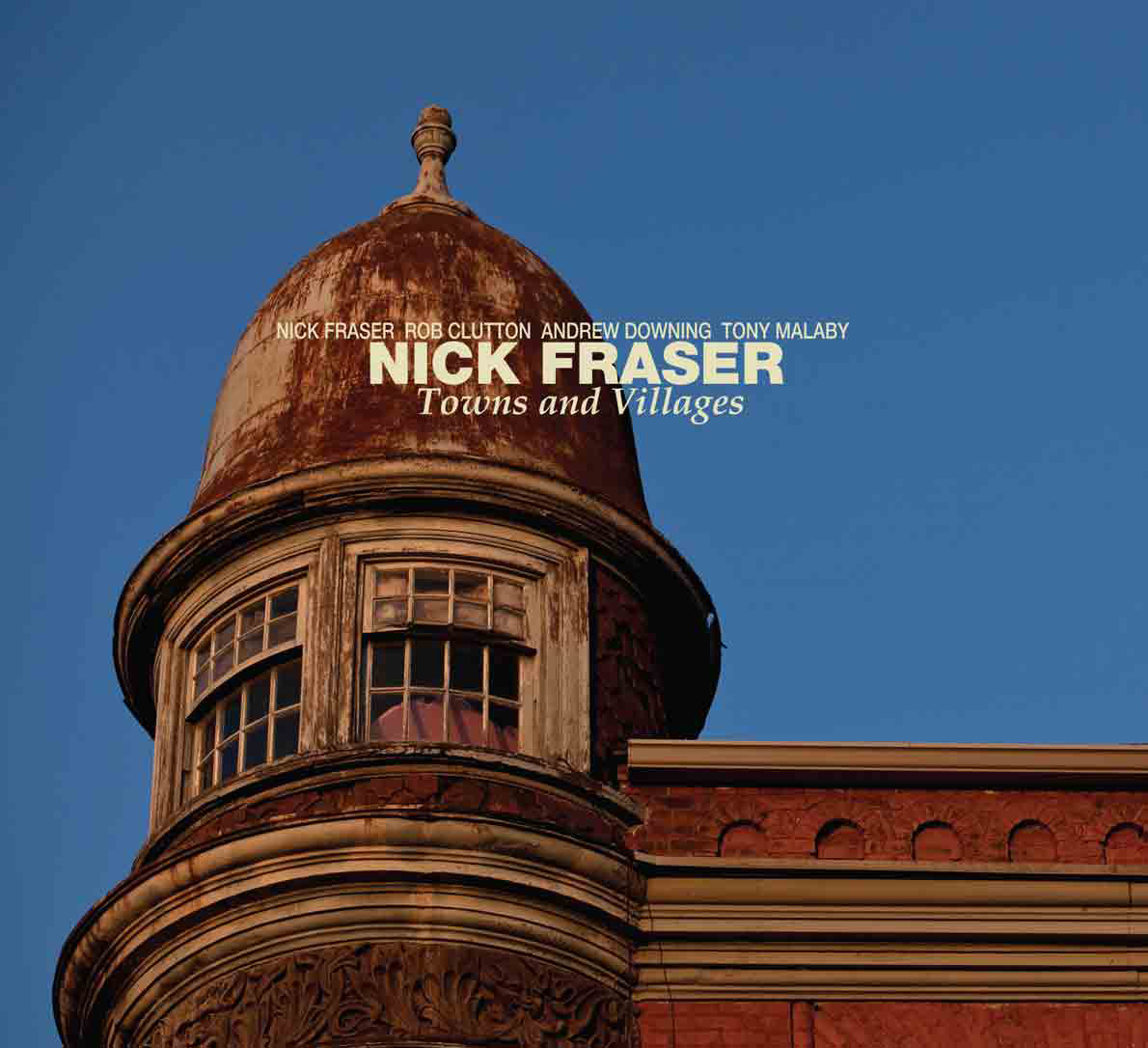A jazz musician who does many things well, and Nick Fraser does many things very well indeed, could easily
lose sight of himself in the clamour for his services. No musician is in greater demand on the Toronto scene these
days than the 36-year-old drummer and yet Fraser, to his credit, has established a fascinating body of work that’s
entirely his own, one that documents a consistently thoughtful, left-of-centre perspective on contemporary jazz.
Beginning with his first trio CD, Owls in Daylight (1997), continuing through his recordings with the quintet
Drumheller — Drumheller (2005), Wives (2006) and Glint (2009) — and turning now to Towns and Villages, a quartet
session with the New York saxophonist Tony Malaby, Fraser has explored the nature of freedom and abstraction in
jazz, moving unassumingly, yet imaginatively, in, out of, between and beyond the music’s various traditions.
It’s in his compositions, which are typically the slightest of melodic turns, sometimes with an Ornette-ish curl — just
a few notes repeated, and repeated again, to both catchy and compelling effect. And it’s in his drumming, which is
measured more in velocity than in volume, but measured all the same — a fast, shifting undertow of precisely struck
and carefully shaped textures and rhythms.
As an aside, it’s worth musing that Drumheller, also the name of a town in southern Alberta, is the better part of an
anagram for “Hell of a drummer.” Enough said.
Fraser’s apparent fascination with Canada’s smaller communities continues on Towns and Villages, which features
group improvisations named for Prescott and Spencerville in eastern Ontario and Hundred Mile House in southeastern
British Columbia; a musician does not tour Canada as often as Fraser has without getting to know its highways,
byways and stopovers.
Fraser originally intended Towns and Villages to present Tony Malaby in the company of two bassists, Torontonians
Andrew Downing and Rob Clutton, a format, he suggests, that was inspired by Ornette Coleman’s recent quartet and
by such recordings as Bill Dixon’s two volumes of Vade Mecum, Joe Lovano’s Universal Language and Dewey
Redman’s Soundsigns; still other recordings by Albert Ayler and the young Tony Williams also come to mind, and in
fact Ayler and Williams seem no less like fleeting points of reference for Towns and Villages than Coleman, Dixon, Lovano
and Redman.
In the event, Downing, who is also an accomplished cellist, proposed the alternative instrumentation heard here; his
cello serves either as a keening second voice to Malaby’s taut, sculpted tenor and soprano solos, all sinew and strain,
or as complementary counterweight to the heft and purpose of Clutton’s steadfast bass lines.
Fraser in turn makes the most, and the best, of his resources to give each of the 12 pieces on Towns and Villages — no
matter how free, no matter how abstract, from the rumble and grind of Prescott: The Fort Town to the dark, stirring
beauty of Ballad for Lydia — its own sense of logic, proportion and clarity.
Mark Miller
Jazz historian, author, critic
November 2012


